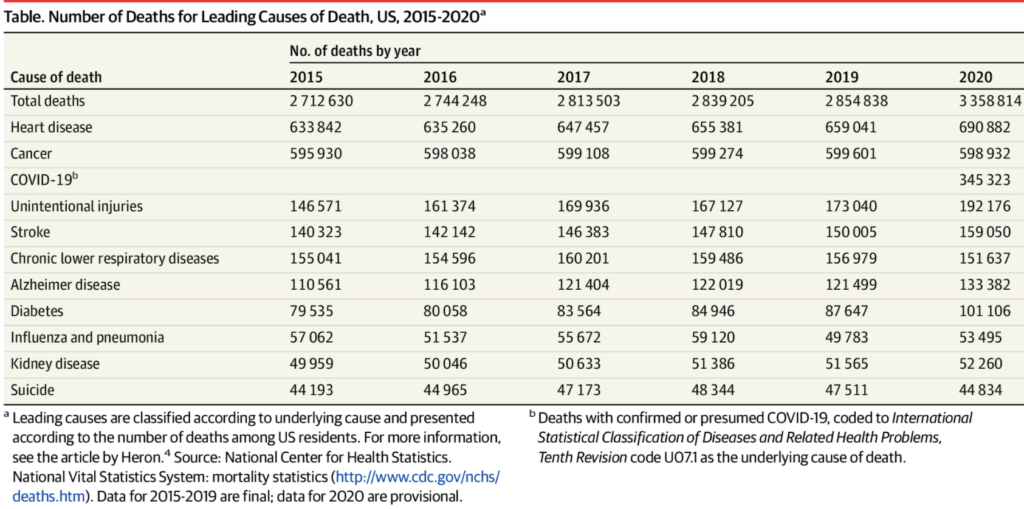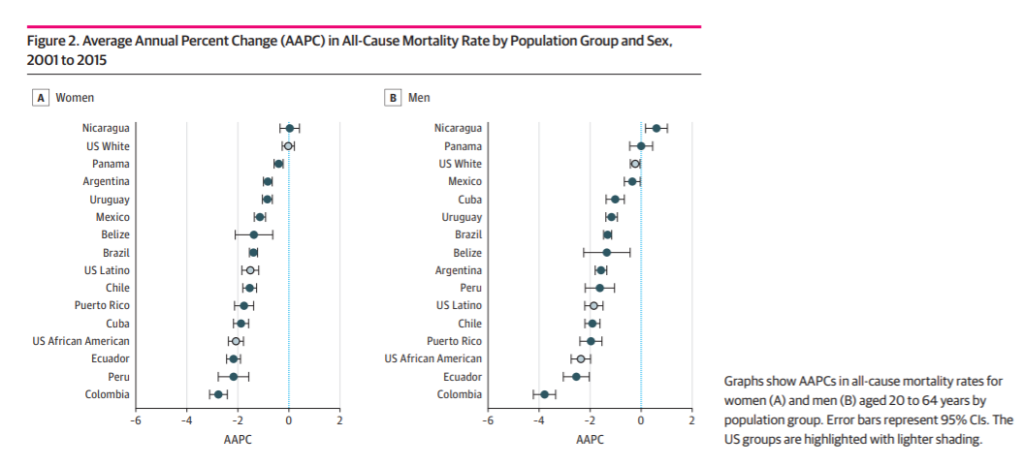Link: https://jamanetwork.com/journals/jama/fullarticle/2778234
Graphic:

Excerpt:
The provisional number of deaths occurring in the US among US residents in 2020 was 3 358 814, an increase of 503 976 (17.7%) from 2 854 838 in 2019 (Table). Historic trends in mortality show seasonality in the number of deaths throughout the year, with the number of deaths higher in the winter and lower in the summer. The eFigure in the Supplement shows that death counts by week from 2015 to 2019 followed a normal seasonal pattern, with higher average death counts in weeks 1 through 10 (n = 58 366) and weeks 35 through 52 (n = 52 892) than in weeks 25 through 34 (n = 50 227). In contrast, increased deaths in 2020 occurred in 3 distinct waves that peaked during weeks 15 (n = 78 917), 30 (n = 64 057), and 52 (n = 80 656), with only the latter wave aligning with historic seasonal patterns.
Author(s): Farida B. Ahmad, Robert N. Anderson
Publication Date: 31 March 2021
Publication Site: JAMA
